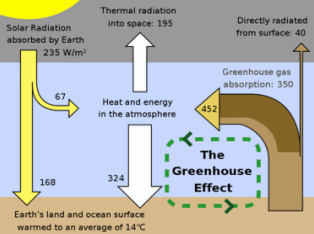By Kim Smiley
The largest solar flare in recorded history occurred on September 1, 1859. As the energy released from the sun hit the earth’s atmosphere, the skies erupted in a rainbow of colored auroras that were visible as far south as Jamaica and Hawaii. The most alarming consequences of this “Carrington Event” (named for solar astronomer Richard Carrington who witnessed it) were its effect on the telegraph system. Operators were shocked and telegraph paper caught fire.
No solar flares approaching the magnitude of the Carrington Event have occurred since, but the question must be asked – What if a similarly sized solar flare happened today?
 There is some debate on how severe the consequences would be, but the bottom line is that modern technology would be significantly impacted by a large solar flare. When large numbers of charged particles bombard the earth’s atmosphere (as occurs during a large solar flare), the earth’s magnetic field is deformed. A changing magnetic field will induce current in wires that are inside it resulting in large currents in electrical components within the earth’s atmosphere during a solar fare.
There is some debate on how severe the consequences would be, but the bottom line is that modern technology would be significantly impacted by a large solar flare. When large numbers of charged particles bombard the earth’s atmosphere (as occurs during a large solar flare), the earth’s magnetic field is deformed. A changing magnetic field will induce current in wires that are inside it resulting in large currents in electrical components within the earth’s atmosphere during a solar fare.
Satellites would likely malfunction, taking with them wireless communication, GPS capabilities and other technologies. This would severely impact the modern world, but the largest impact would likely be to the power grid. There is debate on how long power would be out and how severe the damage is, but it is clear that solar flares have the ability to significantly damage the power grid. Solar flares much smaller than the Carrington Event have caused blackouts, but power was returned relatively quickly. One of the more impressive of these examples occurred in 1989 when the entire province of Quebec lost power for about 12 hours. (Click here to read more.)
NASA works to predict and monitor sun activity so that preventive actions can be taken to help minimize damage if a large solar flare occurs. For example, portions of the power grid could be shut down to help protect against overheating. Scientists continue to study the issue, working to improve predictions for sun flare activity and learn how to better protect technology from them. Click the “Download PDF” button above to view a high level Cause Map, a visual root cause analysis, built for this issue.
More information can be found in a report by the National Academy of Sciences, Severe Space Weather Events–Understanding Societal and Economic Impacts and the NASA website.









